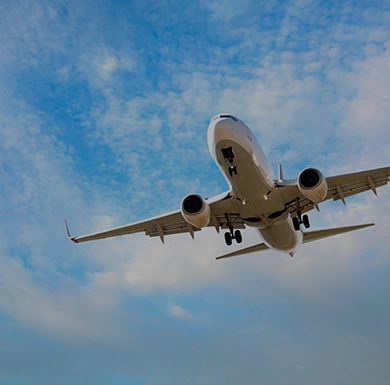
Have you ever been in a quandary as to whether you are “legal” under the rather ambiguous fitness for duty requirements of 14 C.F.R. § 117.5? If you are unfamiliar with this particular regulation, you will note that the essential rule is that “each flight crewmember must report for any flight duty period rested and prepared to perform his or her assigned duties.” Other than some of the rest requirements found in part 117, the only litmus test for “rested and prepared” under § 117.5 offered by the regulations is whether the crewmember is “too fatigued” to perform his or her duties in a safe manner. One ambiguity begets another… you are too tired when you are too tired. What’s worse is that even with very little to go on, the FAA has concluded (2014 WL 657509) that § 117.5(d) requires a flight crewmember to make a written affirmation that he or she is fit for duty each time that flight crewmember commences a flight segment under part 117. The issue here is that due to the subjective nature of the regulation, the FAA can potentially have a field day with you when it comes to an enforcement action – they even have you affirming statements and creating their evidence beforehand. How so?
Let’s say for example that a Captain for an airline finds him or herself pretty tired when he or she shows up to work. The Captain has satisfied all the rest qualifications found in part 117, but due to family stress/drama, finds him or herself pretty tired. The Captain is just plain worn out. Is it enough to bow out of work? That’s a question only the Captain can really answer for him or herself. If the Captain decides to fly and affirms in writing that he or she is fit for duty, but later goes on to have a runway incursion, you can bet your bottom dollar that the FAA will question whether or not the Captain was really “fit for duty.” Unfortunately, the FAA holds all the cards in a situation like this. The objective of the FAA will be to blame someone (or “figure out the cause”) for the runway incursion and an easy soulution would be to bring an enforcement action against the Captain for not really being “fit for duty.” It’s the Captain’s word versus the FAA’s and when such subjectivity is allowed in the regulations, the FAA can pretty much say whatever it wants.
Another hypothetical scenario outlined in a recent FAA legal interpretation highlights more ambiguities in 14 C.F.R. § 117.5. This scenario poses the question of what a flight crewmember should do if he discovers that he is unfit for duty while flying in an airborne aircraft. 14 C.F.R. § 117.5(c) states that “no certificate holder may permit a flight crewmember to continue a flight duty period if the flight crewmember has reported him or herself too fatigued to continue the assigned flight duty period.” So, when a pilot reports him or herself too fatigued to continue the flight duty period while he or she is operating airborne, should the other flight crewmember declare a mayday emergency and land at the nearest suitable airport? Should the non-fatigued flight crewmember continue the flight while the fatigued flight crewmember takes an in-flight nap? Should the fatigued flight crewmember be permitted to perform any duties while fatigued? If the flight continues on with the flight crewmember in a fatigued state, can either or both flight crewmembers be subject to the catch-all enforcement regulation of 14 C.F.R. § 91.13: “[n]o person may operate an aircraft in a careless or reckless manner so as to endanger the life or property of another?”
The FAA’s response to this hypothetical is that: “If a flight crew is augmented and there are non-fatigued flight crewmembers who are able to take over a fatigued flight crewmember’s duties, then they should do so to allow the fatigued flight crewmember to obtain in-flight rest. If a flight crew is unaugmented then the decision of whether to conduct an emergency landing will depend on the flight crewmember’s fatigue level. If the fatigued flight crewmember determines that he can safely land the aircraft at the intended destination, then he should continue to that destination and land. However, if the flight crewmember determines that he is too fatigued to safely land at the intended destination, then he should land the aircraft at the nearest suitable location to avoid accumulating additional amounts of fatigue while operating the aircraft.” Nonetheless, if a flight crewmember has to land a plane because he or she became to fatigued while airborne, the FAA is going to be curious as to why you admitted to being “fit for duty” when you embarked on the flight segment. What’s more is that even though a crewmember may be able to “take over” for a fatigued crewmember, the FAA may still consider this to be “careless or reckless manner so as to endanger the life or property of another” under part 91.
If you have any questions about crew rest requirements, part 117, or FAA enforcement actions, please contact The Pilot Lawyer at 855-FAA-1215 or visit on the web at www.ThePilotLawyer.com.
Contact the Aviation Lawyers from The Ison Law Firm Aviation Lawyers for Help Today
You need both a pilot and a lawyer on your side for your aviation law needs. Don’t hesitate to contact our team from The Ison Law Firm Aviation Lawyers to schedule a confidential consultation with an experienced aviation lawyer today.
We’re pilots representing pilots. The Ison Law Firm Aviation Lawyers offers FAA enforcement defense and medical certification representation worldwide!
The Ison Law Firm Aviation Lawyers
Phone: Toll-Free 855-322-1215
Office Hours: Mon – Thu, 9:00 AM to 5:00 PM
Fri, 9:00 AM to 12:00 PM
Disclaimer: Messages left for attorneys after these business hours will be addressed the following business day, during business hours.

